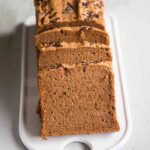
Nutella Pillow Cake (Chiffon Loaf Cake)
Servings: 10 servings
Calories: 190kcal
The Nutella Pillow Cake combines the lightness of chiffon with the richness of Nutella. The result is a cake that’s soft and fluffy with a melt-in-your-mouth texture.
Print Recipe
Ingredients
Cake batter:
- 50 g Nutella
- 100 g yolks from 5 large eggs
- 45 g oil
- 60 g milk whole or low-fat milk
- 90 g cake flour
- 15 g cocoa powder
- 15 g cornstarch
Meringue:
- 100 g sugar
- 150 g egg whites from 5 egg whites
- 1 tsp lemon juice or vinegar
Topping:
- 5 g Unsalted butter really soft
- Chocolate sprinkles
Instructions
- You can use 8 1/2 x 4 1/2 x 2 1/2 loaf pan or 7 1 /2 x 4 1/2 x 4 loaf pan . I use 7 1/2 x 4 1/2 x 4 loaf pan. It's a very tall pan and yields a tall cake
- It is better to use a pan that does NOT have non-stick coating. The cake can cling to the side to help it rise tall. I have used a pan with non-stick coating, while it works too, but the cake is much shorter. Whether your pan has a non-stick coating or does not have non-stick coating , line the bottom of the pan with parchment paper for easier release, but do not line or grease the side of the pan
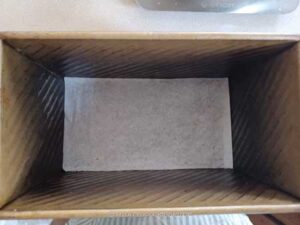
- Preheat your oven to 320 F (160 C) for conventional oven. If you have a convection oven, I suggest lowering the temperature by 20 F (15 C). Place the oven rack at the lowest rack (or adjust accordingly, you will know your oven best)
Prepare the cake batter:
- The eggs and milk need to be at room temperature. Carefully separate the egg yolks from the whites while they are still cold. They are easier to separate when they are cold. We also need one whole egg for this recipe. Let them come to room temperature
- Combine the Nutella, yolks, sugar, oil, milk with a whisk. Sift in the cake flour,cocoa powder cornstarch, and salt. Use a whisk to combine again into a smooth and rather thick batter. Set aside
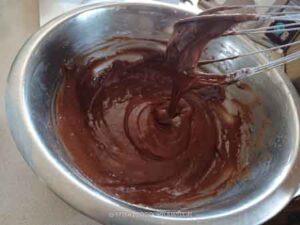
Prepare the meringue:
- Beat the egg whites on medium speed until frothy, add cream of tartar or lemon juice/vinegar and whip until it turns whitish and air bubbles are fine.
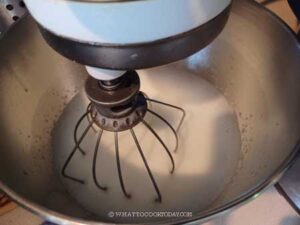
- Gradually add the sugar as you beat, in 3 batches. I beat them at medium speed (speed 6 on Kitchen Aid). This will take a bit longer compared to beating at high speed. I used to do higher speed (speed 8), but the meringue is smoother and nicer when I maintain the speed on 6 and much more stable too. I highly recommend stopping several times to check on the consistency and scraping the sides of the bowl to make sure no sugar left on the side of the bowl. Whip until you reach a stiff peak but still have a slight bent on the tip. Then lower the speed to 4 and whip for 1 minute to even out large bubbles and stop beating
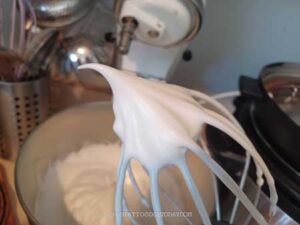
Combine meringue and cake batter:
- Gently fold 1/3 of the meringue into the thick batter.

- Using a whisk, using a cutting motion and fold over to mix. Repeat this motion several rounds.
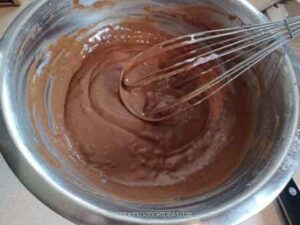
- Continue on with the second 1/3 of the meringue again to mix. For the last 1/3 of the meringue, use a rubber spatula instead to ensure you get all the batter at the bottom of the bowl mixed in as well. Use a cut down in the middle and fold over motion to fold gently but quickly. Make sure you don't see any more white meringue. The mixture should be fluffy and voluminous.
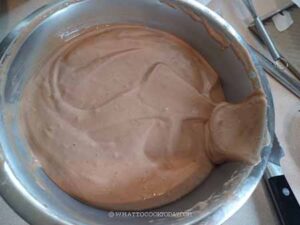
- Pour the batter into the prepared loaf pan. Use a rubber spatula to smooth the surface. Gently tap the pan on the countertop 2-3 times to pop any air bubbles. Use a skewer to draw a zig zag to pop bubbles inside the cake batter, carefully not to disturb the parchment paper lining at the bottom
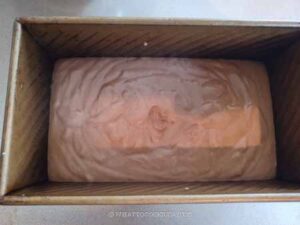
Baking:
- Before putting the pan in the oven, squeeze a really soft butter in the middle. The purpose of this is so that the cake will crack following this line instead of cracking all over the places you don't want it to crack
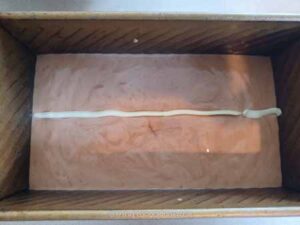
- Sprinkle with some chocolate sprinkles (optional)
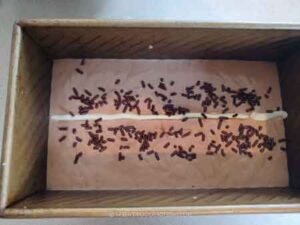
- The cake will very gradually rise tall and then will fall down just a bit towards the end of baking. This is very normal. You don't want your cake to rise tall too quickly, because it will collapse when you take it out
- Put the pan in the lowest rack of the oven and lower the temperature to 300 F (150 C) and bake for 75-80 minutes or until the top spring back when you gently press on it and a cake tester comes out clean. If you are unsure, you can add another 5 minutes or so. It is better to overbake than underbake chiffon cake. Underbaked chiffon cake will collapse when you take it out of the oven
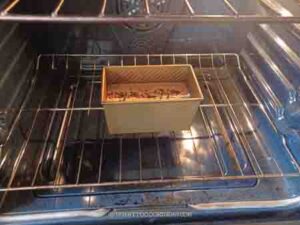
Cooling down:
- Drop the loaf pan from about 10 cm height on the counter several times to prevent shrinkage when you pull the cake out of the oven. Put it on the cooling rack on its side, to cool down completely. You don't need to invert the pan upside down. The cake will shrink slightly as it cools down, but it should not collapse.
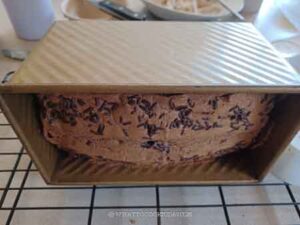
Unmoulding:
- Once it's cool down completely, use a spatula knife to run through the 4 sides and then gently tip the loaf pan over to release the cake. Peel off the parchment paper from the bottom. The bottom of the cake will concave a bit, and this is normal because we line it with parchment paper and the cake couldn't cling to the bottom of the pan, and instead, pulling on the paper causing it to concave a bit
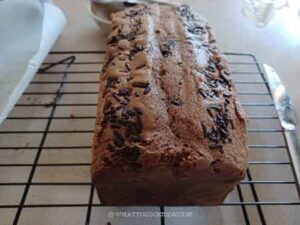
Serving:
- I suggest that you wait for 24 hours before serving the cake (if you can wait). The flavor always gets better the next day compared to when you serve it on the same day
How to store:
- Let the cake cool down completely. Store the cake in an air-tight container for up to 3 days at room temperature. The cake remains soft and fluffy for about 3 days
Nutrition
Serving: 1serving | Calories: 190kcal | Carbohydrates: 23g | Protein: 5g | Fat: 9g | Saturated Fat: 3g | Polyunsaturated Fat: 2g | Monounsaturated Fat: 4g | Trans Fat: 0.02g | Cholesterol: 108mg | Sodium: 35mg | Potassium: 97mg | Fiber: 1g | Sugar: 13g | Vitamin A: 151IU | Vitamin C: 0.2mg | Calcium: 30mg | Iron: 1mg